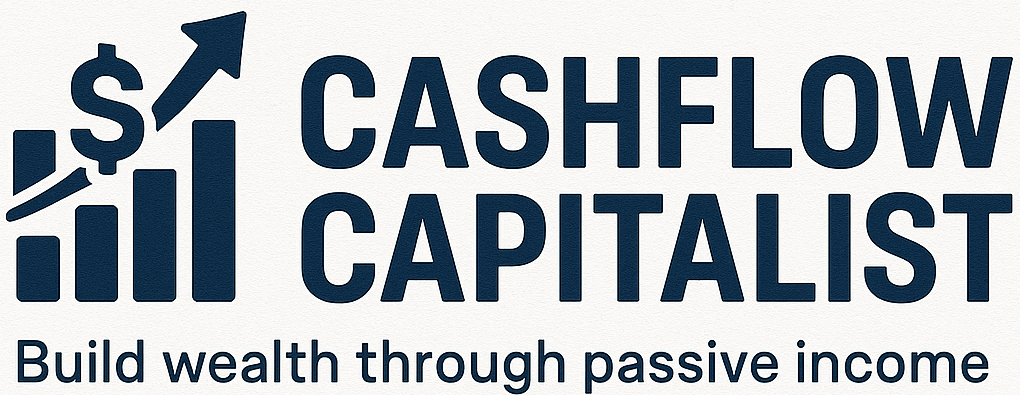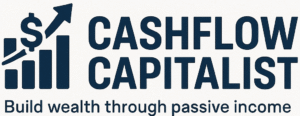Top Low-Risk, High-Reward Investments for 2025 That I Personally Recommend
As a Canadian investor, growing your wealth without too much risk is important. In 2025, I’ve picked low-risk, high-reward investments for steady growth and passive income. My strategy includes dividend-paying ETFs, GICs, and other safe options.

I think a well-diversified portfolio is essential for long-term financial success. In this article, I’ll share my top picks for Canadian investments in 2025. You’ll learn about high-yield TFSA options and the best Canadian ETFs. These opportunities can make your money work smarter, not harder.
Key Takeaways
- Explore dividend-paying ETFs for regular income
- Consider GICs for a low-risk investment option
- Look into high-yield TFSA options for tax-free growth
- Diversify your portfolio with the best Canadian ETFs
- Evaluate safe investments Canada for your financial goals
My Investment Philosophy for 2025
As we enter 2025, my investment strategy focuses on low-risk, high-reward options. The Canadian market can be unpredictable, so a careful and strategic approach is key.

Why I Focus on Low-Risk, High-Reward Opportunities
I choose low-risk, high-reward investments for a good balance. They offer investor safety and the chance for big returns. This is important in 2025, helping investors stay safe while reaching their financial goals.
By picking investments with a solid track record and steady growth, I reduce risk. This way, I can also increase my chances of making more money.
How I Define “Low-Risk” in Today’s Market
In today’s market, “low-risk” means investments that don’t swing wildly in value. Dividend ETFs, High-Interest Savings ETFs, and Blue-Chip Canadian Dividend Stocks are good examples. They are stable and reliable.
These investments help build a strong portfolio. They can help protect against economic downturns.
My Personal Investment Goals for 2025
For 2025, my investment goals are about getting risk-free returns and growing my portfolio. I plan to spread my investments across different types to diversify. This way, I can avoid being too exposed to any one area.
By diversifying, I can handle the Canadian market’s challenges in 2025. This will help me reach my long-term financial goals.
Dividend ETFs: Steady Income with Growth
When looking for safe and profitable investments in 2025, dividend ETFs are a top choice. They offer a steady income and the chance for growth. This makes them appealing as the economy changes.

Why I’m Investing in ZWC and CDZ
I’ve picked ZWC and CDZ for my investment. ZWC tracks the Canadian market, giving broad exposure to dividend-paying companies. CDZ focuses on Canadian stocks, aiming for a steady income.
Performance History and Dividend Consistency
ZWC and CDZ have shown consistent dividends. They’ve provided stable income, even when markets are shaky. This makes them a solid choice for a diverse portfolio.
2025 Outlook for Canadian Dividend ETFs
I’m hopeful about Canadian dividend ETFs in 2025. With stable interest rates, these stocks will likely attract more investors. This trend will help ETFs like ZWC and CDZ.
How to Build a Dividend ETF Portfolio
Creating a dividend ETF portfolio needs careful planning. First, set your investment goals and risk level. For income, consider a big part of your portfolio for dividend ETFs.
Optimal Allocation in a Low-Risk Strategy
In a low-risk plan, put 40% to 60% in dividend ETFs. This mix balances income and growth. Diversify by choosing ETFs that cover different market segments.
This strategy helps build a strong portfolio for 2025’s market challenges.
High-Interest Savings ETFs: The New Safe Haven
High-interest savings ETFs are now a top choice for investors who want safety and good returns. They offer a balance between risk and reward. We’ll see why CASH.TO is a favorite for Canadians seeking safe investments.
Why CASH.TO Is My Top Pick
CASH.TO stands out with its impressive yield and low expense ratio. It gives a better return than most savings accounts. For example, CASH.TO’s yield is much higher than what banks offer.

Comparing Returns to Traditional Savings Accounts
High-interest savings ETFs, like CASH.TO, offer better returns than traditional savings accounts. They are great for those wanting to grow their savings without too much risk.
How I Use These in My Portfolio
I use high-interest savings ETFs as a liquidity management tool. They let me earn more on my cash while keeping it easily accessible. This is perfect for short-term needs or emergency funds.
Tax Considerations for Interest Income
It’s important to think about taxes on interest from high-interest savings ETFs. In Canada, this interest is taxed and reported on your tax return. Using a TFSA can help reduce taxes, as TFSA earnings aren’t taxed personally.
Low-Risk, High-Reward Investments for 2025: My GIC Strategy
In 2025, I’m focusing on GICs for my investments. They are a low-risk choice. The changing economy makes GICs a stable option for my portfolio.
Why GICs Are Making a Comeback
GICs are gaining popularity because of their fixed rates and low risk. With economic uncertainty, they offer a safe place for investors.
Key benefits of GICs include:
- Fixed interest rates over a set period
- Low-risk investment option
- FDIC insurance protection in Canada
My GIC Ladder Approach
I’m using a GIC ladder to get the most from my investments. This means spreading my money across different GICs with various terms.
1-Year vs. 5-Year Terms: What I’m Choosing
I’m splitting my GIC investments between 1-year and 5-year terms. This mix helps balance getting returns and keeping some money liquid.

Best GIC Providers in Canada for 2025
Choosing a GIC provider is important. I’m looking at both online and traditional banks. Online banks like EQ Bank are known for their competitive rates.
Online Banks vs. Traditional Banks
Online banks usually offer better rates than traditional banks. But, I also value the services and branch access of traditional banks.
By spreading my GIC investments across different providers and terms, I aim to reduce risk and increase returns.
Blue-Chip Canadian Dividend Stocks
Looking ahead to 2025, I’m focusing on top Canadian dividend stocks. These are known for their stability and growth. They’re great for investors who want steady income with less risk.

My Top 5 Canadian Dividend Stocks for 2025
I’ve picked five Canadian dividend stocks for 2025. They’re in two main sectors: banking and utilities/telecom. Each has its own strengths.
Banking Sector Picks
- Royal Bank of Canada (RY): Known for its stability and consistent dividend payouts.
- Toronto-Dominion Bank (TD): Offers a strong track record of dividend growth.
Utility and Telecom Selections
- Fortis Inc. (FTS): Provides a stable source of dividend income with its utility-focused business model.
- Telus Corporation (T): Attractive for its dividend yield and growth in the telecom sector.
- Enbridge Inc. (ENB): Offers a high dividend yield and leads in the energy transportation sector.
Why These Companies Offer Both Safety and Growth
These blue-chip Canadian dividend stocks are chosen for their dividend income and growth. Companies like Royal Bank of Canada and Fortis Inc. pay consistent dividends and invest in growth.
The banking sector, including Royal Bank of Canada and Toronto-Dominion Bank, thrives in stable economies. They’ve shown resilience in different market conditions.
How to Build a Dividend Stock Portfolio
Creating a dividend stock portfolio means picking stocks for steady income and growth. It’s key to diversify across sectors to reduce risk.
DRIP Programs I Recommend
Dividend Reinvestment Plans (DRIP) let investors reinvest dividends into more shares. I suggest using DRIP programs for long-term growth.
For example, Telus Corporation and Enbridge Inc. have DRIP programs. They help investors grow their returns over time.
REITs and Utility ETFs for Passive Income
In 2025, I plan to invest a lot in REITs and utility ETFs. They offer good yields and are less volatile. These investments are great for steady passive income, perfect for those wanting predictable returns.
Why I’m Investing in ZRE and ZUT
I’ve picked ZRE and ZUT for their solid track records and portfolio diversification. ZRE covers a wide range of real estate trusts. ZUT focuses on utility companies. Both provide stable income through dividends.

Benefits of ZRE and ZUT include steady income and lower volatility. This makes them good for balancing risk and reward.
Expected Yields and Growth for 2025
In 2025, I expect ZRE and ZUT to offer competitive yields. Their growth depends on the real estate and utility sectors’ performance.
| ETF | Expected Yield | Growth Potencial |
|---|---|---|
| ZRE | 4.5% | Moderate |
| ZUT | 4.2% | Stable |
How to Balance These in Your Portfolio
To balance REITs and utility ETFs, think about your investment goals and risk level. They can anchor an aggressive portfolio or be a standalone income strategy.
TFSA vs. RRSP Placement Strategy
When choosing between TFSA and RRSP for these investments, consider taxes. A TFSA might be better for income due to its tax-free status. But, an RRSP could be better for deferring taxes.
It’s key to talk to a financial advisor to find the best spot for your investments based on your situation.
Precious Metals ETFs as Wealth Preservation Tools
I’m looking to diversify my portfolio for 2025. I’m drawn to precious metals ETFs as a reliable way to keep my wealth safe. They have a history of protecting against inflation and market ups and downs. This makes them a low-risk investment.

Gold and Silver ETFs I’m Adding to My Portfolio
I’m focusing on gold and silver ETFs for their liquidity. They play a key role in my strategy to keep my wealth safe. I’m looking at ETFs that track the price of gold and silver. This gives me direct exposure to these precious metals.
Key Benefits:
- Diversification: Reduces reliance on any single asset class.
- Liquidity: Easily bought and sold on major exchanges.
- Hedging: Effective against inflation and market downturns.
Why Precious Metals Matter in 2025
Precious metals are a safe haven for investors, even with market ups and downs. Their value and limited supply make them a good choice for keeping wealth safe.
“Gold is a currency that’s been around for thousands of years, and it’s not going anywhere.” –
Allocation Strategy for Metals in a Low-Risk Portfolio
When adding precious metals ETFs to a low-risk portfolio, I aim for balance. I usually put 5-10% of my portfolio into precious metals. This helps reduce risk while benefiting from their ability to hedge against market changes.
Physical vs. ETF Holdings
Choosing between physical precious metals and ETFs is a big decision. Physical metals offer tangible ownership, but ETFs are more liquid and easier to manage. Here’s a comparison:
| Feature | Physical Holdings | ETF Holdings |
|---|---|---|
| Liquidity | Low | High |
| Management | Complex | Simple |
| Storage | Required | Not Required |
In conclusion, precious metals ETFs are a key part of a low-risk investment strategy. They offer diversification and protection against market volatility. By understanding their benefits and how to allocate them, investors can make smart choices to keep their wealth safe.
Low-Volatility Crypto Staking: Calculated Risk for Higher Returns
I’m exploring low-volatility crypto staking in 2025 to boost my returns while managing risk. It offers a stable income but requires understanding the risks.
Why I’m Cautiously Adding Staking to My Strategy
Crypto staking appeals for its chance to earn passive income. By staking, investors get rewards in more coins or tokens. Yet, the crypto market’s volatility makes a low-volatility strategy key.
I focus on stable coins to reduce risks. This way, I enjoy staking’s benefits while avoiding big market swings.
Stablecoins vs. Established Cryptocurrencies
For low-volatility staking, stablecoins and established coins are good choices. Stablecoins, like USDT, are tied to traditional currencies, making them less volatile. Coins like Bitcoin and Ethereum, though volatile, are more predictable than newer coins.
| Characteristics | Stablecoins | Established Cryptocurrencies |
|---|---|---|
| Volatility | Low | Moderate |
| Potential Returns | Lower | Higher |
| Risk Level | Lower | Moderate |
Canadian Platforms I Trust for Crypto Staking
In Canada, Shakepay and Wealthsimple are trusted for crypto staking.
Shakepay and Wealthsimple Options
Shakepay makes staking easy with a simple interface. Wealthsimple offers a wide range of investments, including staking. Both are secure, which is vital for protecting your money.
When picking a platform, look at fees, supported coins, and how easy it is to use.
Risk Management Techniques I Use
To manage risk, I diversify my staking across different coins and platforms. I watch market trends and adjust my strategy as needed. I also invest only what I can afford to lose, keeping my overall portfolio balanced.

Conclusion: Building Your Own Low-Risk, High-Reward Portfolio for 2025
Investing in 2025 requires a smart, diversified portfolio for safe growth in Canada. My strategy for 2025 includes dividend ETFs, high-interest savings ETFs, and GICs. It also includes blue-chip Canadian dividend stocks, REITs, and precious metals ETFs.
These investments help balance risk and returns, creating a solid financial base. When building your portfolio, spread your investments across different types to reduce risk. For Canadian options, consider ZWC, CDZ, and CASH.TO, known for their low-risk choices.
Good financial planning means checking and updating your strategy often to meet your goals. As you create your 2025 portfolio, take a careful and informed approach. This will help you succeed in the long run.
FAQ
What are the best low-risk investment options for 2025 in Canada?
I suggest looking into high-interest savings ETFs, GICs, and dividend ETFs like ZWC and CDZ. They strike a good balance between safety and returns.
How do I define “low-risk” in today’s market?
For me, low-risk investments are about keeping your money safe while it grows. Blue-chip Canadian dividend stocks and REITs like ZRE are good examples.
What is the benefit of using a GIC ladder approach?
A GIC ladder helps spread out your GIC investments by term. This way, you get a steady flow of maturing investments to reinvest or use as needed.
Why are dividend ETFs a good investment choice for 2025?
Dividend ETFs, such as ZWC and CDZ, offer a mix of dividend-paying stocks. They provide a stable income and the chance for long-term growth.
How do I balance REITs and utility ETFs in my portfolio?
To balance REITs and utility ETFs, set aside a part of your portfolio for them. Then, spread your investments across different types to manage risk.
What are the tax implications of investing in high-interest savings ETFs?
Interest from high-interest savings ETFs is taxable. So, think about the tax impact and consider holding them in a tax-free savings account (TFSA).
Why are precious metals a relevant investment in 2025?
Precious metals, like gold and silver, can protect against inflation and market ups and downs. They add value to a well-diversified portfolio.
What are the risks associated with crypto staking, and how can I manage them?
Crypto staking comes with risks like market volatility and platform issues. To handle these, diversify your stakes and use trusted Canadian platforms.
How do I choose the best GIC providers in Canada for 2025?
When picking a GIC provider, look at interest rates, terms, and insurance (like CDIC). Online banks often offer good rates and flexible terms.
What is the difference between investing in a TFSA vs. RRSP?
TFSAs grow tax-free and withdrawals are tax-free, too. RRSPs let you deduct contributions but are taxed when you withdraw. Choose based on your personal situation and goals.




